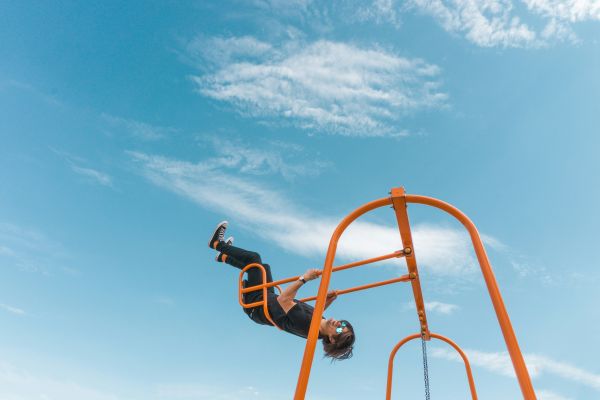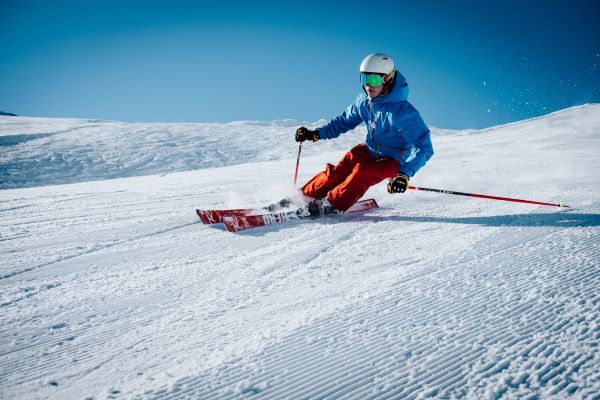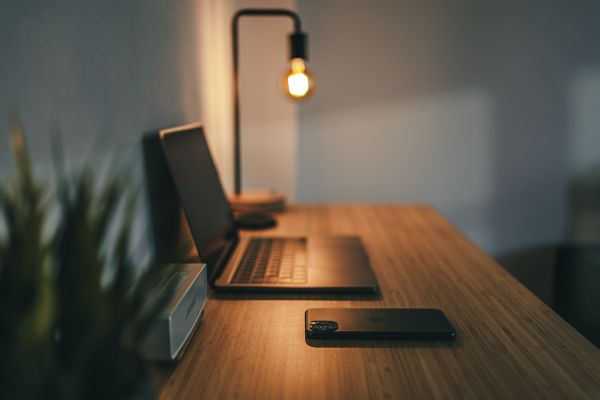This is an experiment in daily sitting meditation. See the original post here. It is similar to my first experiment but my intention is different. In the first experiment, I just wanted to see what would happen. Poke, prod, play with meditation a little, and see what came of it. I learned a lot, but it did not become a habit.
That was over a year ago, and I’ve reached a point in my like where I fully understand the importance of daily meditation in my life. The goal this time is not just to see what happens, but to create a strong daily habit of formal sitting meditation.
The experiment is 40 days, starting Friday May 28, 2010, after which I should be well habituated to daily meditation. Preceding that forty days will be a test week in which I just try the habit on casually to see what sorts of snags I’m going to encounter during the proper experiment.
Meditation sessions will be 30 or 45 minutes.
The Progress Log
Tuesday, May 25
Well test week is underway, and results are, uh, inconclusive.
I started off with three straight sessions in three days, though none of them quite hit my 30-minute minimum mark. Privacy has been the main issue, as I’m living in hostels that don’t offer quiet space where I won’t be disturbed. But I have been using the privacy problem as an excuse for shortening and pushing back my sessions.
The last two days I didn’t do more than just sit for a few minutes, with no real intention of staying with the breath for 30-45 mins.
However, the sessions I did have have had a considerable effect on my mood and clarity of mind. My internal dialogue has quietened (is that a word?) significantly since I began. I’ve been more grateful, more comfortable with myself, and much less reactive. I’ve been more productive, more present, and generally unworried about the future. Namely, writing has been easier. I’ve felt a bit “against the ropes” since I left Canada when it comes to my writing. While I’m on the move I often don’t give myself enough time or privacy to get my blogging done, and it’s really had an impact on my mindset when it comes to writing. Now I feel like I am ready to take it on, with a renewed, clearer mind. But meditation will be an essential component.
I’m taking this lovely rash of happiness as a powerful hint that I’m on the right track, and that this experiment is very important.
But I will need to do it differently than I’ve been doing it. I don’t want to carve out a specific time for meditation, because every day is different on the road and I think I’ll end up missing it more than hitting it. But doing it early in the day seems to be key.
So the first resolution to come out of my test week is:
Other than breakfast and showering, do not undertake any other activities voluntarily until the meditation session has been completed. This means meditation will be my only goal for the day, each day, until I complete it. Then I can do whatever I want.
This also means I must get my meditation done before I indulge in my daily coffee ritual. I’ve noticed that the effects of caffeine are not the meditation-dealbreaker I previously made them out to be — I can still meditate when I’m buzzing out on my flat white. But I’m no longer allowing it beforehand.
Of course, I’ll probably encounter situations (7am busrides come to mind) in which it will be impossible or needlessly difficult to adhere to this new rule. So if I break it for whatever reason, it is important that I practise Integrity in the Moment of Choice. This means if I have missed my planned, before-everything morning session, I will hold myself to the original intention of the experiment, and just do it in the afternoon. In the past I have been guilty of using a botched commitment to excuse me from my responsibility for the whole day. If I never forget my intention of meditating every day, then in those moments when I am tempted to get away with missing it, I’ll plunk myself down right then and there.
Here’s Steve Pavlina:
Integrity in the moment of choice means you must revisit your original intention and apply it to the situation at hand, a situation you probably did not foresee. What’s most important is not that you follow the letter of the original intention but rather the spirit of it.
That’s the key. Unexpected scenarios always come up in these experiments, and I can’t always have a go-to policy in place for all of them. That’s when I need to keep m original intention in mind and let it tell me the right thing to do, rather than saying “Whoops, I screwed up… this is a write-off until tomorrow.
I still haven’t had my session today, but I will make sure I do. 30 minutes, good or bad.
Friday, May 28
Today is the first day of the proper 40-day trial.
I began the day with a couple of crumpets, then headed down to the beach to find a meditation spot at about 7:50. When I sat, the sun was obscured by a thin swath of cloud, and it was quite comfortable.
But about ten minutes into it, the clouds passed and I felt the naked sun cooking me. Direct sunlight is a dealbreaker for my concentration; I can’t sit there openly and presently when my face is on fire. A shaded, private spot proved difficult to find. All the candidate spots were in the grass, soaked from the rain last night. So I wandered a bit up the path, hoping to find a spot, but there was nothing going.
So I went for a coffee, as I often do when I’m not sure what to do. Then suddenly I was in the middle of my day, and the town (I am in the beachside hub of Byron Bay today) was buzzing. It was getting hot, and I was getting a bit cranky from the crowds and from dehydration.
Finally, I remembered that the only other guest in my dorm was due to check out at 10am, so the room would be mine for a few hours. By that time I’d had two coffees and an irritable few hours, so conditions were not ideal. But I remembered my motto: “Put in the time, good, bad, or ugly,” and sat. I was a bit drowsy from caffiene burn-out and still cranky. My mind wandered a lot, and I began to fall asleep a few times. It was not a particularly pleasant half-hour, and I wanted to quit many times during it, but I did get through it.
Finding a decent meditation spot has been my greatest challenge so far. It needs to be private (as in not right beside the sidewalk — outside of the range of audible conversations from passers-by) and it needs to be out of the sun, and I need to have confidence that I won’t get bitten by crabs or pecked at by shorebirds while I am sitting there with my eyes closed. I will go earlier tomorrow and sit right on the sand. If I’m there by 7am, the sun shouldn’t be very intense.
Clearly I should have not done anything else in the morning until I did my meditation. That’s when I’m most alert and my mind is the least talkative.
Tuesday, June 1
Five for five so far.
I’ve had the rare fortune of having my dorm all to myself for the past four days, so I’ve always had a private place to go. I’ve been getting my session done before I get wrapped up in anything else. But today I didn’t for some reason. I just went about my day, planning to meditate later. When I finally brought myself to the cushion, it was 5:30 pm. The session was a bit odd — I was a bit tired so I found it easy to keep with the breath and not get lost in thought, but I started drifting into half-sleep. Morning is definitely the best time, because there is the least risk of drowsiness, which is my worst hindrance other than not being able to find a private place to do it.
I did consider skipping it today, without even trying, because I was already drifting off reading my book before starting my session. I came that close to breaking my streak, not because I wasn’t up to putting in the 30 minutes, but because I was afraid of meditating in a drowsy state. From experience, it can be awful… reminiscent of trying to pay attention to boring class presentations when you’re on no sleep. The friction between trying to be conscious while your body wants the precise opposite is not pleasant, and I really thought about avoiding the possibility altogether by skipping it. But I stuck with the “good bad or ugly” motto, and I made it.
But the session wasn’t as bad as I thought, though it didn’t feel nearly as fruitful as my morning sessions. Important lesson learned. Do it early.
Thursday, June 3
I just cut my session short, for the first time since my 40 days started. I am having the exact same experience I had yesterday.
Like yesterday, I waited until evening to meditate. I could have done it in the morning on both days, without much difficulty, but I dodged it, reasoning that I had all day. I think the deciding factor both times was my very strong desire to indulge in my coffee ritual without anything in the way. I feel a rush of freedom when i decide to put off meditation until later in the day.
My reasoning was that, unless I’m outright falling asleep, my meditation is still totally doable without being painful, and at six pm, I’m not yet drifting off to sleep — so it’s as good a time as any.
But clearly it’s not. My mind is full of thought at that time, and I want to do other things. I am much more dull, and I’ve got caffeine (and today alcohol as well) in my system. I don’t feel stable, and my intention to stay with the breath is much much weaker. I could have sat for the thirty minutes, but I knew the intention wasn’t really there and I would just be putting in the time out of obligation.
My session yesterday was pretty fruitless, I was not sleeping, but still “sinking” as they call it: awake but unfocused and dull. Same thig was happening today, and halfway through, I pulled the plug. I deliberately violated my “put in the time, good, bad or ugly” mantra today because I wanted to jump on my journal right away and document the consequences of avoiding meditation in the morning while they were still fresh.
This also means I must place extra importance on getting my meditation done before anything else. It’s a little more difficult suddenly, because I’m in an unfamiliar city again (Brisbane) and the closest spot I know I can count on is a fifteen-minute train and two ten-minute walks away (not in that order.)
But tomorrow morning I will go straight there, and do my meditation on the grassy south bank of the Brisbane river while the city wakes. And then I can go for my coffee if I want.
Saturday, June 5
Third day in a row that I have cut my session short. The “finding a spot” problem remains. Every morning I take the train out to South Bank, but there just isn’t a lot of greenspace there, and I always find myself too close to the traffic to do anything but battle my thoughts about people’s conversations and ibises pecking at me.
I know that is in violation of my “30 minutes, good, bad or ugly” motto, but I think it’s because I know I can do better.
The solution just struck me, and it’s quite obvious: go to a different park. One with enough open spaces that I can sit uninterrupted for my half-hour. Duh. I’ll try the botanic gardens first.
Fear certainly has something to do with it. I am afraid of unfruitful sessions — the ones where I just sit there and never manage to actually observe anything — where I’m in the river, instead of sitting by its bank. Not that there’s anything wrong with unruly sessions; I guess I just fear being frustrated. I fear not wanting to sit down again. I fear this becoming a chore.
Thinking about it now, I don’t think those things are going to happen.
Tuesday, June 8
Sunday and Monday went well. I found a bigger park, and that’s all it took.
Today wasn’t so smooth though. I had a rotten sleep, due to having moved into an 8-bed dorm in a party hostel. I won’t rant about the (literally) dozens of interruptions to my sleep, but it did have meditation-hampering consequences. I didn’t get properly to sleep until 3am, so I lingered in bed until almost 9 (unheard of for me) and was still not well-rested.
So meditating first thing was going to be awful. I put it off, got started on my online work, with the intent of doing it after a light lunch. I did, and found a big field to meditate in, but about ten minutes into it, a rugby team descended on the entire park and it was no longer a safe (let alone peaceful) place to meditate. It was already mid afternoon and I had more work to do, so I just sat quietly and watched for the remainder of my session, but it was not formal meditation.
No big deal. I am eager for a good rest tonight. I have ear plugs this time.
I have also noticed a pleasant side-effect to meditating. Immediately after my session, I do feel more aware, and the world seems quieter and more agreeable. But occasionally, an even more intense stillness will just hit me later on in the day, hours after I’ve meditated. It seems to come out of nowhere. It’s happened twice now.
Thursday, June 10
Well I finally missed a day.
I got a poor sleep again, so I pushed my meditation to mid-day again. And my morning at the library wasn’t very productive so I felt a need to get back to work. I sat in the same park where the rugby took place the other day, and this time a maintenance crew showed up to dump soil everywhere. So I hopped on the train to have lunch and meditate in a different park, and there was live music setting up there, so I decided just to go back to the library and get to work.
My decision that work was more important by that point is an interesting one. When you decide to install a new habit, it’s tempting to think that you are so bent on doing it that it should trump everything else in your life. But of course it can’t. I wanted to get ahead in my writing by a day, more than I wanted to get my meditation session done that day. Theoretically, it only would have delayed my work by 45 minutes, but I think I was afraid of being anxious to get started, or maybe that I wouldn’t be as determined to get work done if I delayed any longer.
Anyway, it’s a bit revealing.
Friday, June 25
Ok. I have not fallen off the wagon, I’ve stepped off. I haven’t had a full-length session since I was in Brisbane over two weeks ago.
Despite my intention to sit for 30 minutes, good bad or ugly, in practice it’s clear I don’t want to sit down if it’s likely to be bad or ugly, and often that’s the case. I’ve had too many frustrating sessions in a row now. The main hindrance is still finding a disturbance-free meditation spot — which often involves a long walk (or even a train ride) to a park. It’s feeling like too big of a lump in my day right now, particularly because the spots I pick seem to always seem to attract frisbee players, families with screaming toddlers, and ibises that peck at my feet in their endless search for hot chips.
Rain has also been a big factor. I can never find a reliable place inside the hostel, and if it has rained or is raining, I can never find a suitable outside spot. If the elements do co-operate and I find a sittable patch of grass, a rugby game breaks out around me, as per Murphy’s Law.
My time away is now very limited and I just don’t feel like it’s worth continuing this frustrating ritual at the moment. I have only sat down twice this week, and it’s clear my intention is just not there.
Therefore, I am putting this experiment on hold until I am home (which is only three days from now), and there I will always have a quiet room to do it in.
In the mean time, I have been meditating informally a lot more. Sitting mindfully for a few extra minutes here or there, walking on the beach while I just watch and listen, and practicing nonjudgment while I people-watch. This has proved a valuable habit, and it’s at least as important as my sitting sessions.
I’ll report when I get home.
September 6, 2010
Whoops! Dropped the ball here. No updates for two months.
I decided in Brisbane, back in June to put daily formal meditation on the backburner. The process of finding an appropriate meditation spot every day was frankly such a pain in the ass that it was detracting too much from my dwindling travel time. It just didn’t seem as important as enjoying myself.
Life did not become stable as soon as I got home. I’ve been staying with family since, and job-searching, and only now do I have a place of my own.
But for now I will keep formal meditation on the backburner. There will be a time in my life when it feels important enough for me to do, but for right now I’m doing just fine with active mindfulness and the odd sitting session.
So experiment 7 is officially terminated, and I will do a 40 day trial again sometime in the future.
-David







 I'm David, and Raptitude is a blog about getting better at being human -- things we can do to improve our lives today.
I'm David, and Raptitude is a blog about getting better at being human -- things we can do to improve our lives today.
Perhaps there is a transition, at some point, from “Discipline” to “Helpful Habit”. It’s true for me. I don’t find brushing my teeth to be a demanding discipline. It’s more muscle memory at this point. I don’t find resisting soda difficult - I habituated seltzer 15 years ago and have...